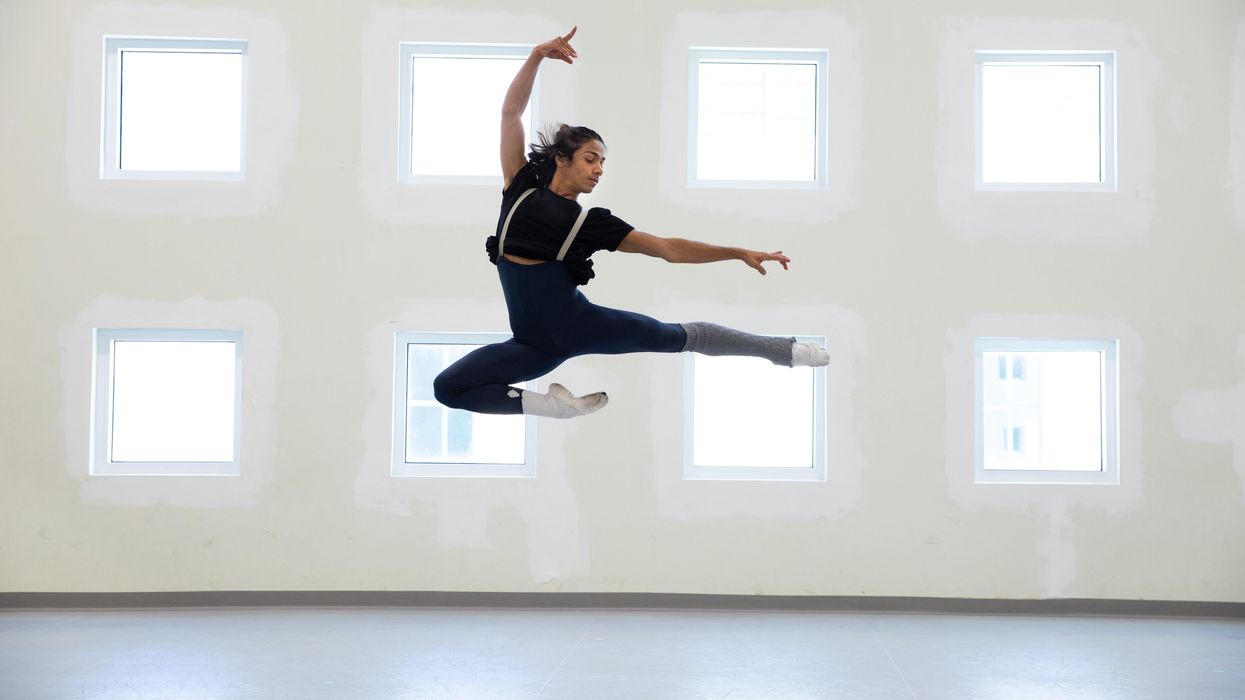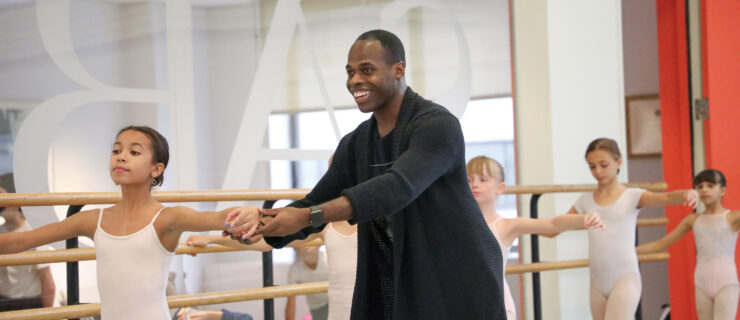From Mumbai to Miami Beach: Amiruddin Shah’s Journey to Becoming a Professional Ballet Dancer
Amiruddin Shah has had to overcome more than most dancers to get to where he is today. The new 20-year-old corps member with Miami City Ballet grew up in Mumbai as the youngest of seven brothers and sisters. They all worked from an early age, cleaning tables and dishes in hotels, and selling pickled mango on the street to support the family.
Shah started b-boying when he was 6 years old in parks and beaches (and, occasionally, uninvited at weddings). Five years later, his brother, Nizamuddin, gave up his spot at The Danceworx Mumbai so Shah could get proper training. Although he began by studying hip hop and contemporary dance, he caught the attention of Yehuda Maor, an Israeli-American teacher who was leading the ballet division. Maor saw Shah’s potential, and his arched feet.
Maor taught in English, which Shah did not speak, nor did Shah even know what ballet was at first, but he took to it quickly. “I just understood the ballet language so naturally,” Shah says. At the same time, “It was really overwhelming with the amount of attention that I was getting. I couldn’t really comprehend that intensity, but I could sense what he was trying to do with me.”
After just two years, Maor started sending Shah’s audition tape to ballet schools abroad. Shah was first accepted at the Joffrey Academy of Dance in Chicago and Oregon Ballet Theatre School (where he spent a short time), and later to American Ballet Theatre’s Jacqueline Kennedy Onassis School and The Royal Ballet School.
He chose London because he was awarded the 2017–20 Nadia Nerina Scholarship for three years of training in the renowned Upper School. Shah has the distinction of being not only the first Indian to receive this scholarship, but also the first Indian student in the history of the school.
Yet he struggled with culture shock, a language barrier and being thrown into a whole new style of ballet. Then, a lifetime of poor nutrition and stress caught up with him, and he experienced multiple injuries. “Growing up, at times I lived off of one potato a day. So many things were missing in my body,” he says. “I was working full-time for my family since I was a kid—that’s not what kids are meant to do, but that was what I had to do for my family to survive.”

Ludovic des Cognets, Courtesy The Royal Ballet School
Shah sat out what was supposed to be his third and final year to recover, and came close to quitting at one point. Instead, he ended up realizing how much he loved ballet even though he kept getting injured.
After taking a full year off, he spent a month and a half preparing for his graduation assessment in March 2020. Then, of course, the pandemic hit. He returned to London exactly a year later to begin retraining his body yet again and getting into the right mindset to complete his assessment in July 2021.
By then, he already had his first gig lined up: Former New York City Ballet principal John Clifford had seen a video of Shah online and invited him to be a guest soloist on a project he was working on in Los Angeles. A Facebook video of Shah honing his Balanchine style under Clifford’s guidance ended up catching the eye of Lourdes Lopez, Miami City Ballet’s artistic director.
“The petit allégro combinations were fast, but Amir’s technique and line in executing those fast combinations were maintained, which told me he had strong classical training,” Lopez says. It was only after she reached out to him that she learned his story.
“Here was a young man who didn’t just want to dance, he had to dance,” she says. He went to Miami Beach to audition, and Lopez hired him on the spot.
The BBC has dubbed Shah “India’s Billy Elliot,” and his story was even one of the inspirations for the Netflix film Yeh Ballet. But he shies away from the attention. In fact, he doesn’t really like to talk about his past. Instead, he looks ahead to a bright future.

On top of rehearsing for Miami City Ballet’s season, he has also continued work on his own company, Theartdoor, a social media/collaboration tool for all types of artists and organizations to connect and collaborate. TAD has a digital talk show, TAD Is In Progress, featuring one-on-one conversations with artists, and an app launching in December.
Shah intimately knows the struggles of artists in countries like India, and TAD is his way of offering something to help. “I really want to change how our world works in a good way,” he says. “When I see that happening, it makes me happy, and it tells me that it was worth putting in the time.”




